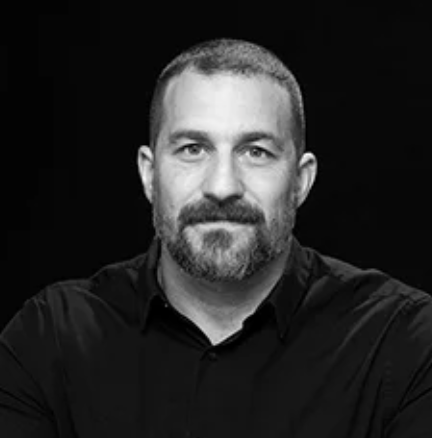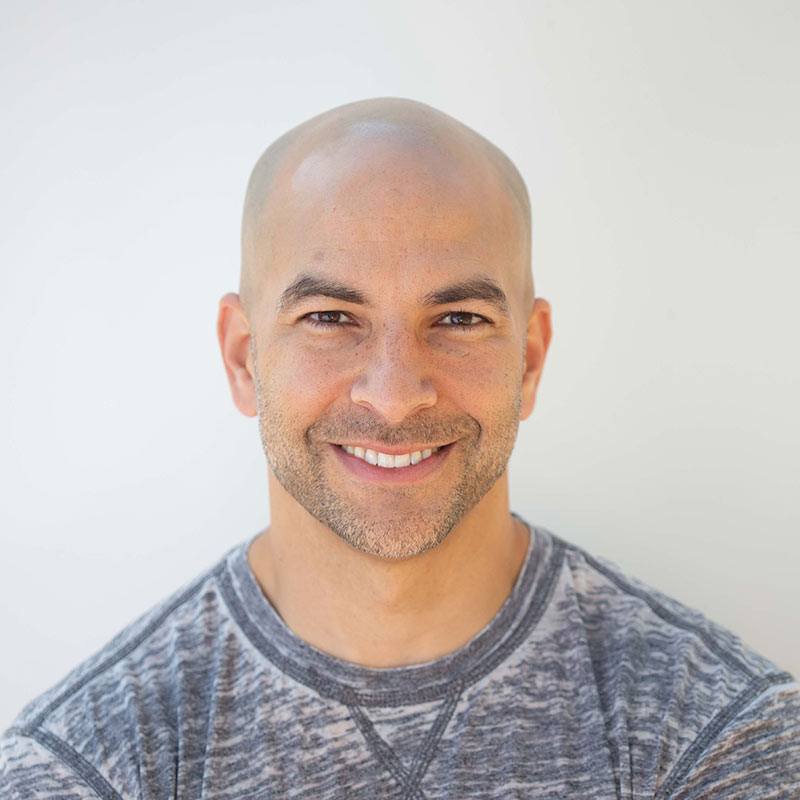The Science of Healthy Hair, Hair Loss and How to Regrow Hair
Dr. Huberman delves into hair biology, growth, and factors causing hair loss. Hair stem cells and treatments are explored, including minoxidil, tadalafil, PRP, microneedling, Botox, and ketoconazole. Hormone-related hair loss and treatments like caffeine, saw palmetto, growth hormone, finasteride, and dutasteride are discussed. Expectations, side effects, and combination therapies are covered, aiding listeners in making informed choices.
Key Takeaways
High level takeaways from the episode.
Protocols
Science-based tools and supplements that push the needle.
Source
We recommend using this distillation as a supplemental resource to the source material.
Full Notes
Hair Biology and Psychology
- Hair is fascinating from a cellular biology and stem cell perspective
- Every individual strand of hair has its own stem cell niche
- Hair growth duration varies depending on the hair and its location on the body
-
Hair loss can cause anxiety and stress
- Psychological well-being can impact hair coloration and growth rates
- Hair thinning or loss can lead to anxiety or depression for some people
Hair Loss and Hair Growth
-
Hair loss affects 50% of men and women by age 50
- Causes anxiety, leading to attempts to halt or reverse hair loss
- Hair loss occurs gradually from age 30 to 50
- Psychological states can impact hair growth/loss and vice versa
Biology of Hair and Stem Cells
- Hair growth relies on endogenous stem cells (cells within the body)
- Hair consists of a root (below the skin) and a shaft (above the skin)
- Hair bulb: a small pocket at the base of the root containing stem cells
- Stem cells divide and give rise to daughter cells, which become various types of cells that make up the hair
- Hair is made up of a protein called keratin
- Melanin-producing cells give hair its pigment
Sebaceous Glands and Sebum
- Sebaceous glands are located next to hair roots within the dermal layer of the skin
- Produce sebum, an oily substance that:
- Forms a seal where the hair exits the skin, providing waterproofing
- Helps maintain skin health and hair growth
Mechanical and Chemical Approaches to Hair Loss
- Mechanical approaches: massaging the scalp, micro-needling
-
Chemical approaches: targeting hormones such as estrogen, thyroid hormone, insulin-like growth factor, and androgens (e.g., testosterone, dihydrotestosterone) that regulate hair growth and stem cell populations
Sebum and Hair Growth -
Sebum: essential for waterproofing and immune system function
- Strong antibacterial and antimicrobial properties
- Protects hair root and surrounding region from infection
- Relevant to psoriasis and fungal components causing hair loss
Erector Pili Muscle
- Lies diagonally between hair bulb and skin surface
- Contracts when cold or scared, causing goosebumps
- Pulls skin down around hair follicles
- Hairs stand up, trapping air for warmth (more effective in hairier individuals)
- Important for huskies and other animals in cold environments
Hair Growth Process
- Hair grows from the bottom up, starting deep within the root
- Three phases of hair growth:
- Anagen (growth) phase
- Duration varies depending on body region
- Scalp hair: 2–8 years (average 6 years)
- Eyebrow hair: 4.2 months (average)
- Catagen (transition) phase
- Telogen (resting) phase
- Anagen (growth) phase
Factors Affecting Hair Growth
- Duration of anagen phase differs between individuals
- Longer anagen phase = longer hair growth period
- Rate of hair growth likely similar within a given body region
- Differences in hair length more likely due to anagen phase duration
-
Increasing blood flow to hair stem cells and melanocytes can slow hair loss and extend hair growth duration
- Methods: scalp massage, avoiding tight hats, using peppermint oil or menthol-type oils
- Best used in conjunction with other hair growth treatments
Hair Growth Phases and Factors
-
Three critical stages of hair life cycle:
- Anagen phase: hair growth
- Catagen phase: hair receding and dying
- Telogen phase: rest period, no new hair proteins added
- Hair can reenter the life cycle and grow again if conditions are right
- Hormones act as accelerators and brakes on these phases
Minoxidil and Hair Growth
- Minoxidil (Rogaine) was originally a hypertension drug
- Lowers blood pressure by causing vasodilation
- Increases blood flow to hair follicles, extending the anagen phase
- Can slow hair loss on the scalp and other areas of the body
- Side effects of minoxidil:
- Lowered blood pressure
- Swelling of ankles
- Headaches
- Dizziness
Minoxidil and Prolactin
- Minoxidil can increase the hormone prolactin
- Prolactin is antagonistic to dopamine, which is associated with motivation and drive
- Side effects of increased prolactin:
- Reduction in libido
- Reduction in overall feelings of well-being
- Apathy
- Gynecomastia (male breast tissue growth)
- Milk letdown in extreme cases
-
Women who take minoxidil can experience similar side effects as men
Minoxidil for Hair Loss -
Mainly used to slow hair loss, not reverse it
- Dosage is crucial
- Oral minoxidil: ranges from 0.25 mg to 5 mg per day
- Topical minoxidil: typically 5% concentration, used once or twice daily
- Minoxidil works by increasing blood flow to the hair stem cell niche
- Oral minoxidil: wide dosage range, from 0.25 mg to 5 mg per day
- Topical minoxidil: typically 5% solution, used once or twice daily
- Leave solution on the scalp for 3–5 minutes for absorption
Other Treatments for Hair Loss
- Low-dose Tadalafil (2.5–5 mg)
- Increases blood flow to the scalp, similar to minoxidil
- Platelet-rich plasma (PRP)
- Controversial treatment, involves injecting platelets into the scalp
- Expensive and results may be temporary
- Not sufficient clinical data to support its use
-
Microneedling
- Mechanical stimulation of the hair follicle and stem cell niche
Microneedling for Hair Growth
- Mechanical stimulation of the hair follicle and stem cell niche
-
Microneedling involves using small needles to create micro-injuries in the skin
- Stimulates hair growth by reactivating stem cells in the hair follicles
- Can be used in combination with other hair growth treatments for better results
- Microneedling can cause some pain and bleeding, but is generally well-tolerated
- Needle lengths of about 1mm seem to be more effective than shorter lengths
- Combination of microneedling and minoxidil treatment is more effective than either treatment alone
- Can even recover “dead zones” on the scalp where hair no longer grows
- However, minoxidil treatment may need to be continued indefinitely to maintain results
Botox for Hair Growth
- Botox (Botulinum neurotoxin) is a bacterial toxin that inhibits nerve cell communication
- Commonly used to reduce wrinkles by paralyzing facial muscles
-
Botox injections can be applied to the scalp to relieve tension
- May improve blood flow and stimulate hair growth
Botox for Hair Loss
- May improve blood flow and stimulate hair growth
-
Botox treatment becoming common for scalp
- Decreases tensile nature of scalp skin, allowing more blood flow to hair follicles
- Requires skilled practitioner to avoid cosmetic issues
- Botox wears off, needs repeated injections
- Efficacy for hair loss not yet clear, needs more clinical studies
- Alternative: low dose tadalafil for increased blood flow without side effects
Cutis Verticis Gyrata
- More common in men, but occurs in women too
- Lumping of skin on scalp, associated with pattern hair loss
- Botox injections can help flatten folds and improve hair growth
Chemical Variables in Hair Growth
- IGF‑1 (Insulin Growth Factor 1) and Cyclic AMP: accelerators of hair growth
- Extend the anagen (growth) phase
- PDE (Phosphodiesterase) and TGF-beta 2: brakes on hair growth
- Shorten the anagen phase or extend the catagen (receding) or telogen (quiescent) phases
Androgen-Related Alopecia
- Testosterone and its derivatives (e.g., dihydrotestosterone or DHT) inhibit IGF‑1 and Cyclic AMP
- Higher testosterone levels in younger individuals, but more conversion to DHT with age
- DHT binds to androgen receptors, inhibiting hair growth
- Pattern of androgen receptors on scalp is inherited, affecting hair loss patterns
-
Androgen receptors on face responsible for beard growth, which can increase with age and DHT levels
Androgen Receptors and Hair Growth -
Androgen receptors differ between scalp, face, and back
- High density of androgen receptors on the back leads to hair growth
- High density of androgen receptors on the scalp can lead to hair loss
- Treatments for hair loss often focus on inhibiting DHT or the conversion of testosterone to DHT
Chemically Adjusting Hair Growth Pathway
- Caffeine can stimulate hair growth and halt hair loss
- Potent Pde inhibitor, indirectly stimulates IGF One
- Can be applied topically in ointments or creams
- Comparable efficacy to minoxidil without side effects
- Not a replacement for minoxidil, but a good alternative
- Increasing IGF One can also promote hair growth
- Prescription drugs like growth hormone and Cermorellin can increase IGF One
- Comes with potential side effects and risks, including increased cancer risk
-
Insulin sensitivity is important for IGF One activity
- Avoid insulin resistance and obesity to prevent hair loss
- Supplements like Myoinostatol, Berberine, and Metformin can improve insulin sensitivity
- Regular exercise and a healthy diet are crucial for maintaining insulin sensitivity and hair health
Metformin and Berberine
-
Equally effective in reducing blood sugar levels
- Can improve insulin sensitivity
- Should be taken with carbohydrates to avoid discomfort
Iron and Hair Growth
- Iron and ferritin play a key role in cell growth pathways for hair
- Blood levels of iron should be measured before supplementing
- Women: 25–100
- Men: 30–150
- Iron can be obtained through nutrition and supplementation
Dihydrotestosterone (DHT) and Hair Loss
- DHT shortens the growth phase of hair and miniaturizes hair follicles
- Reducing DHT can help maintain hair growth and prevent hair loss
Saw Palmetto
- Weakly inhibits 5‑alpha reductase, reducing DHT
- Low side effects, low cost, and available over the counter
- Typically taken at 300mg per day, divided into 2–3 doses
Herbal Compounds and Hair Growth
- Difficult to study due to multiple variables and combinations
- Some may have minor effects on hair growth, but clinical studies are lacking
- Curcumin may inhibit 5‑alpha reductase and DHT, but can have side effects
Ketoconazole
- Antifungal initially developed to treat dandruff and psoriasis
- Can increase hair number and diameter, but may cause dry, brittle hair
- Mechanism of action involves disrupting fungal growth and reducing DHT
- 80% response rate in maintaining hair when used 2–4 times per week with 3–5 minutes of scalp contact time
-
Unclear if it can stimulate new hair growth
Ketoconazole Shampoo for Hair Loss -
Ketoconazole shampoo can help with hair thinning and loss
- Recommended usage: 2–4 times per week, 3–5 minutes of scalp contact
- Massage into the scalp and around hair follicles
- Likely works by offsetting reductions in the hair growth phase and exacerbation of the hair shedding phase
- Important to use a shampoo with at least 2% concentration of Ketoconazole
- Many available options are 1% or lower
- Side effects are generally mild, affecting 1–8% of users
- Irritation of the scalp, thinning and brittleness of hair
- Can be offset by using shampoos containing biotin
Finasteride for Hair Growth
- Finasteride inhibits five alpha reductase, reducing DHT and promoting hair growth
- Can increase hair count by 20% and hair thickness by 20–30%
- Reduces hair loss in 90% of users
- Side effects can be significant if not dosed properly
- Sexual side effects, reduced motivation, and depressive symptoms
- Comes in oral and topical forms
- Topical form was developed to reduce systemic side effects
- However, topical form can still enter systemic circulation
- Dosing is crucial for minimizing side effects
- Start with the lowest effective dose (0.1–0.2 mg orally)
- Topical finasteride dosing is harder to control, but 1% solution is thought to be equivalent to 1 mg systemic finasteride
-
Patience is key, as hair growth may not be noticeable for the first few months of treatment
Finasteride and Dosage Recommendations -
Finasteride sensitivity varies among individuals
- Recommended starting dosage: 0.5 to 1 mg per day
- Some may need to reduce dosage or stop taking it due to side effects
- Results take time; increasing dosage too quickly is not advised
- Long-term commitment needed; start with a low dose for an extended period (e.g., 25 weeks) before considering increasing dosage
Topical Finasteride
- Associated with 30% to 50% fewer or less severe side effects than oral finasteride
- Recommended starting dosage: 1 ml of 0.25% solution, taken once per week
- Monitor DHT levels and work with a doctor
Post-Finasteride Syndrome
- Occurs after stopping finasteride use
- Symptoms include reduced libido, erectile dysfunction, and depression
- More common in younger males (20s and 30s) than older males
- DHT likely plays a role in brain development and maturation, which may be affected by finasteride use
Dutasteride
- Inhibits all three isoforms of the 5‑alpha reductase enzyme
- Works 2 to 5 times faster than finasteride for hair regrowth
- Reduces DHT by 95%
- Typical dosage: 0.5 to 2.5 mg taken orally
- Associated with significant side effects, including reduced sex drive, increased estrogen and prolactin levels, and gynecomastia
-
Some people choose Dutasteride for faster results, despite the side effects
Mild Inhibition of DHT Pathway for Hair Growth -
Topical caffeine, salt palmetto, and ketoconazole can mildly reduce DHT
- Finasteride is a potent stimulus for increasing hair growth
- Combination treatments involving mechanical and chemical stimuli are most effective
- Microneedling and finasteride can lead to significant hair regrowth
- Can also use ketoconazole shampoo and salt palmetto
Individual Response to Hair Growth Treatments
- People have highly individual responses and side effect profiles to treatments
- Start with minimal effective dosages and consult a medical professional
- Consider both mechanical approaches (e.g., massage, microneedling) and chemical pathways (e.g., sal palmetto, ketoconazole shampoo)
Evaluating Hair Growth Treatments
- Understand the biology of hair growth and the mechanisms of various treatments
- Place treatments into categories based on their known or potential mechanisms
- Evaluate which treatments might be right for you
Support the Podcast
Huberman Lab Premium Subscription
- $10/month
- 1 Ask Me Anything (AMA) episode per month
- Significant contribution to fund human scientific research selected by Dr. Huberman (with dollar-for-dollar matching from the Tiny Foundation)
- Early-access to Huberman Lab live events
- Subscribe here
Huberman Lab Neural Network Newsletter
- Zero-cost newsletter with summaries of podcast episodes and protocolsToolkits for sleep, focus, neuroplasticity, cold/heat exposure, fitness, and flexibility
- Sign up at hubermanlab.com (email not shared)
- Downloadable PDFs of previous newsletters available without sign-up
Huberman Lab Social Media
Sponsors
Levels Continuous Glucose Monitor
- Helps assess the impact of food, food combinations, and timing on blood glucose
- Provides real-time feedback on diet and blood sugar
- levelshealth.com/huberman
Inside Tracker
- Personalized nutrition platform that analyzes blood and DNA data
- Provides personalized dashboard with nutrition, behavior, and supplement recommendations
- Now includes apolipoprotein B (APOB) measurement in their ultimate plan
- Visit insidetracker.com/huberman for 20% off any plan
Momentous
- High-quality supplements used by sports teams and in Department of Defense studies
- Single ingredient formulations
- livemomentous.com/Huberman
LMNT
- Sciencebacked ratio of electrolytes: 1 gram of sodium, 200 milligrams of potassium, and 60 milligrams of magnesium and no sugar.
- drinklmnt.com/huberman for free sample pack
Whoop
- Fitness wearable device that tracks daily activity and sleep
- Provides real-time feedback on optimizing health
- Visit join.whoop.com/Huberman for the first month free
Roka
- Eyeglasses and sunglasses designed for athletes and everyday people
- Visit roka.com and enter code Huberman for 20% off the first order
Helix Sleep
- Customized mattresses and pillows for better sleep
- Visit Helixsleep.com/Huberman for up to $350 off and two free pillow


